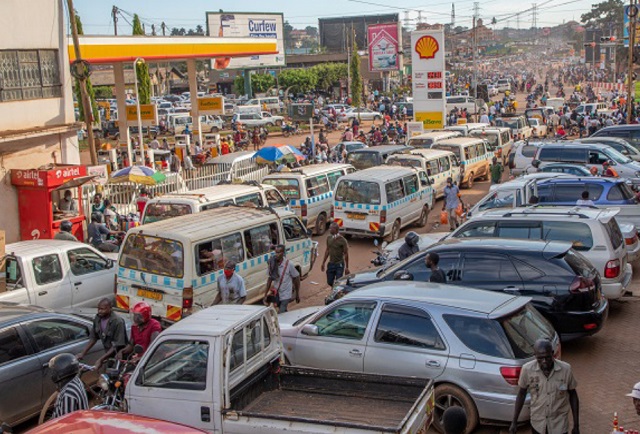
Astrid R.N. Haas is an Urban Economist who has worked previously at the African Development Bank. She has also served as a Senior Country Economist and Head of the Cities that Work Initiative at the International Growth Centre (IGC) in Kampala. She spoke to Ian Katusiime about some of the critical issues facing Kampala and other aspects of urbanisation.
You have just come back from CHOGM in Kigali where you made a presentation on sustainable urbanisation. What were your takeaways from Kigali as a host?
Kigali is a beautiful city, and it was wonderful to be back there once again for CHOGM. I commend the Rwandan government for an incredibly well-organised and hosted event. Beyond this, it is also important to mention all the work that the Government of Rwanda together with the Commonwealth partners have invested in the years leading up to CHOGM. For example, the work I have been deeply involved in, the development of the Call to Action on Sustainable Urbanisation across the Commonwealth, extends back nearly three years. It was wonderful to see the culmination of these particular efforts, when the Heads of Government adopted a Declaration on Sustainable Urbanisation. This Declaration not only acknowledges, the need for integrated strategies to deliver safe and sustainable urbanisation, it directly calls for support to cities to mobilise resources to develop scalable programmes that address key challenges, while reducing their risk and vulnerability.
 Could skyrocketing fuel prices be a boon to cities like Kampala if fewer people drive to town?
Could skyrocketing fuel prices be a boon to cities like Kampala if fewer people drive to town?
The current fuel prices are already having a demonstrable effect on the city and particularly congestion: at 6pm on a weekday evening, a time usually characterised by heavy rush hour traffic, numerous streets now more resemble a weekend or a public holiday. This is a clear sign that many can no longer afford fuel, and prices are currently only set to rise. There is no doubt that to address the climate emergency, it is imperative that we drastically reduce our dependence on fuel. Cities across the world, including Kampala, have a major part to play in this as they already generate an estimated 70% of greenhouse gases. However, this requires also having commensurate policies, such as a green mass public transportation, that ensures that people and businesses do not suffer, as they are now. Hopefully the current crisis places a renewed urgency, focus and, most importantly, action around this.
People have often talked about need for sustainable mass urban transport system in Kampala in the form of bus rapid transport and light rail for distant areas. Is this feasible?
It is not only feasible but necessary to unlock the economic benefits of urbanisation. In fact, introducing mass public transportation could be a win-win solution in many respects. For example, if it is implemented and managed well, it would greatly improve access to employment and services for citizens, create substantial numbers of new jobs and lower carbon emissions. In Kampala, we have already undertaken several feasibility studies for the Bus Rapid Transport (BRT) which seems to be our prevailing technology of choice. Unfortunately, several factors have prevented the government from moving from transitioning these studies to any form of implementation. One of the challenges is the contentions around how the transition towards the BRT should happen, importantly including what role the current transport providers, including boda-boda and taxis, can and, critically, should play as a continued part of Kampala’s overall transportation system.
Kampala’s boda boda system has been dubbed as a necessary evil. Is this unique to Kampala and what are your views on how to regulate boda bodas?
Boda bodas are not unique to Kampala – they are found in urban settings characterised by significant congestion and lack of mass public transportation options. In these contexts, rather than identifying them as an “evil,” one needs to clearly understand two of their major attributes: firstly, they are providing a service to urban residents in the form of transportation, and secondly, in places like Kampala with high unemployment, they provide jobs. There are of course significant challenges with boda-bodas as they currently operate; including the quality of the service provided from a user’s perspective and the substandard working conditions from the rider’s perspective. Effective regulation, that addresses these challenges requires, at the outset, having a deep understanding of how the sector operates, necessitating close consultations with all the stakeholders. In addition, it is critical that prior to establishing regulation, to have a clear vision of what it actually intends to achieve
There is a lot of talk about smart cities today. How can a place like Kampala harness the power of AI technology to become a Smart City?
The term “Smart City” is extremely nebulous and therefore open to significant interpretation and potential misuse. The promise, implicitly or explicitly, underpinning this definition is that advances in technology, like AI, coupled with the new types of data that is generated, will help cities like Kampala leapfrog to resolve its urban challenges. However, for many of the problems we face, there are already effective, tried and tested “analogue” solutions. Furthermore, whilst data can tell you that there is a problem, it still requires effective policies and dedicated programmes to solve these. A great example is property tax collection: there is no doubt that is an area that has greatly benefited from advancements in technology and data. However, the data collected is only as useful as the policies and institutional capacities in place to not only analyse the data, but, importantly, implement the tax system overall.
Lastly, Kampala has a fast-growing population that has been predicted to hit 9million by 2050. What are the implications of this?
Essentially this reflects exactly the message that I delivered at CHOGM, namely the urgency in taking action is now. If we do not, the costs, in terms of the challenges we already experience, will be significantly exacerbated, affecting not only the residents of Kampala, but also Uganda more broadly and of course the planet, particularly when we consider the climate implications. However, if we more effectively manage our urban transition, and already plan now for these 9 million people, the opportunities are immense. We know this as across history and across the globe no country has ever reached middle-income status without undergoing a well-managed urban transition. Broadly, this requires us to: Plan for the growth in ways that advance a green transition; Invest in infrastructure to attract and grow businesses that will create jobs; and empower citizens to take advantage of the opportunities our cities provide.
****
 The Independent Uganda: You get the Truth we Pay the Price
The Independent Uganda: You get the Truth we Pay the Price



